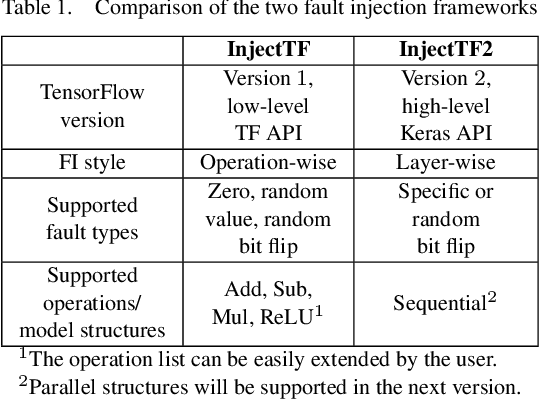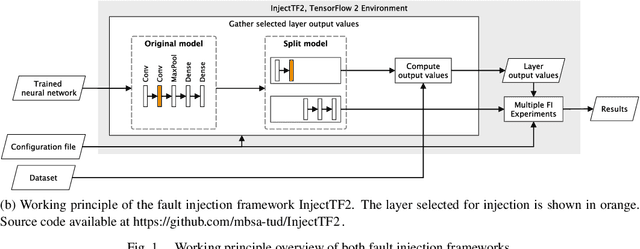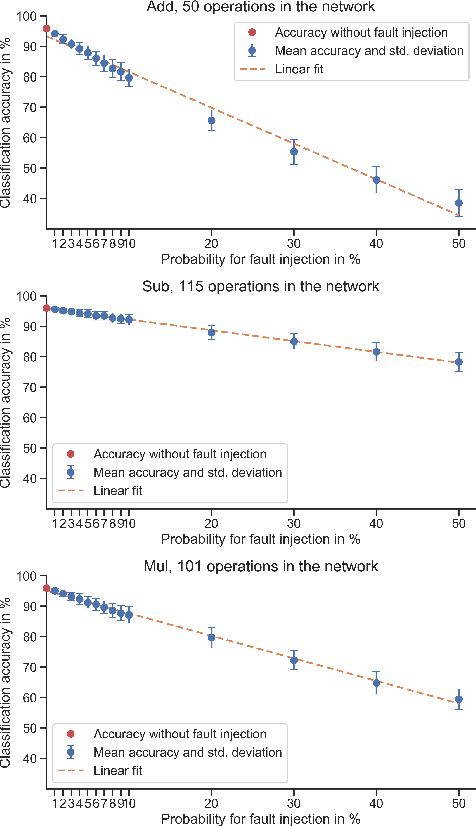Fault Injectors for TensorFlow: Evaluation of the Impact of Random Hardware Faults on Deep CNNs
Paper and Code
Dec 13, 2020



Today, Deep Learning (DL) enhances almost every industrial sector, including safety-critical areas. The next generation of safety standards will define appropriate verification techniques for DL-based applications and propose adequate fault tolerance mechanisms. DL-based applications, like any other software, are susceptible to common random hardware faults such as bit flips, which occur in RAM and CPU registers. Such faults can lead to silent data corruption. Therefore, it is crucial to develop methods and tools that help to evaluate how DL components operate under the presence of such faults. In this paper, we introduce two new Fault Injection (FI) frameworks InjectTF and InjectTF2 for TensorFlow 1 and TensorFlow 2, respectively. Both frameworks are available on GitHub and allow the configurable injection of random faults into Neural Networks (NN). In order to demonstrate the feasibility of the frameworks, we also present the results of FI experiments conducted on four VGG-based Convolutional NNs using two image sets. The results demonstrate how random bit flips in the output of particular mathematical operations and layers of NNs affect the classification accuracy. These results help to identify the most critical operations and layers, compare the reliability characteristics of functionally similar NNs, and introduce selective fault tolerance mechanisms.
 Add to Chrome
Add to Chrome Add to Firefox
Add to Firefox Add to Edge
Add to Edge